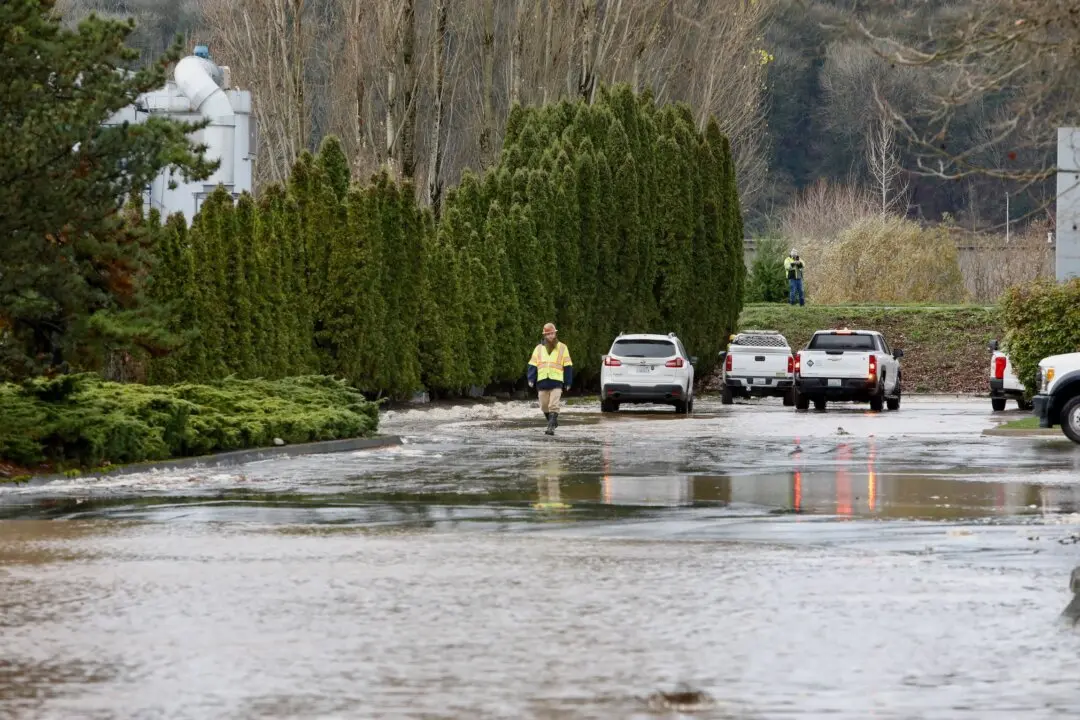ST. AUGUSTINE, Fla.—Hurricane Matthew spared Florida’s most heavily populated stretch from a catastrophic blow Friday but threatened some of the South’s most historic and picturesque cities with ruinous flooding and wind damage as it pushed its way up the coastline.
Among the cities in the crosshairs were St. Augustine, Florida; Savannah, Georgia; and Charleston, South Carolina.
“There are houses that will probably not ever be the same again or not even be there,” St. Augustine Mayor Nancy Shaver lamented as battleship-gray floodwaters coursed through the streets of the 451-year-old city founded by the Spanish.
Matthew—the most powerful hurricane to threaten the Atlantic Seaboard in over a decade—set off alarm as it closed in on the U.S., having left more than 300 people dead in Haiti.
In the end, it sideswiped Florida’s Atlantic coast early Friday, swamping streets, toppling trees onto homes and knocking out power to more than 1 million people. But it stayed just far enough offshore to prevent major damage to cities like Miami, Fort Lauderdale and West Palm Beach.
[gallery size=“medium” ids=“2168871,2168870,2168869,2168868,2168867,2168866,2168864,2168863,2168862,2168861,2168860,2168859,2168549,2168548,2168547,2168546,2168545,2168544,2168543,2168542,2168541,2168540,2168539,2168536,2168535,2168534,2168531”]
One U.S. death was reported, that of a woman whose house was hit by a tree in the Daytona area.
“It looks like we’ve dodged a bullet,” said Rep. Patrick Murphy, a Democrat whose district includes Martin County, just north of West Palm Beach.
Several northeastern Florida cities, including Jacksonville, were still in harm’s way, along with communities farther up the coast. Authorities warned that not only could the hurricane easily turn toward land, it could also cause deadly flooding with its surge of seawater.
About 500,000 people were under evacuation orders in the Jacksonville area, along with another half-million along the Georgia coast.
“If you’re hoping it’s is just going to pass far enough offshore that this isn’t a problem anymore—that is a very, very big mistake that you could make that could cost you your life,” National Hurricane Center Director Rick Knabb warned.
As the storm closed in over the past few days, an estimated 2 million people across the Southeast were warned to clear out.
St. Augustine, which is the nation’s oldest permanently occupied European settlement and includes a 17th-century Spanish fortress and many historic homes turned into bed-and-breakfasts, was awash in rain and seawater that authorities said could top 8 feet.
“It’s a really serious devastating situation,” the mayor of the city of 14,000 said. “The flooding is just going to get higher and higher and higher.”
Historic downtown Charleston, usually bustling with tourists who flock to see the city’s beautifully maintained antebellum homes, was eerily quiet Friday, with many stores and shops boarded up with plywood and protected by stacks of sandbags.
The city announced a midnight-to-6 a.m. curfew Saturday, around the time the coast was expected to take the brunt of the storm.





